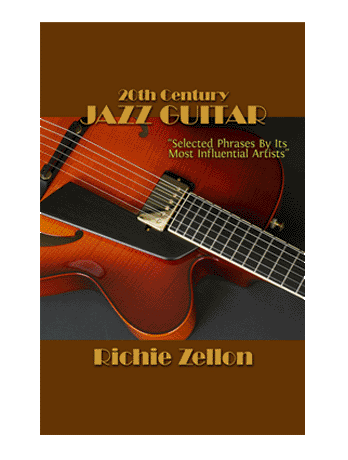George Benson & John Scofield Compared
Transcribed from Video:
For this lesson I picked 2 of my favorite living jazz guitar masters…George Benson on the bebop side and John Scofield on the post-bop side. Some might even call it old school and new school, side by side. Stylistically speaking, they sound so different on the surface, yet when you place there solos under the microscope you’ll be surprised to learn how much they have in common.
And to prove this point I have transcribed 1 chorus of each guitarist playing over the same up tempo blues progression in the key of F. So next I am going to play each guitarists solo at a moderate tempo, trying to emulate their respective styles the best I can. After that I will break down and analyze each one. I’m Richie Zellon and I want to invite you to stick with me because you will be amazed as to what you will learn! Listen to George Benson ‘s 5th chorus on his solo over Billie’s Bounce from his early album “Giblet Gravy”. (plays Benson solo)
Ok, full disclosure here. I can easily play a nice improvised solo over that progression, but believe me… it is an entire different matter to sight read the transcription at that tempo and get all the nuances down. I would have to practice it for a few days and I didn’t see the point of delaying this lesson. So I in fact recorded it in 4 measure segments to get it down. And that is the same thing I did for this next one which is even harder to get all the nuances. This is John Scofields 7th chorus of his solo on Trio Blues from the album “This Meets That”. (Plays Scofield Solo)
PDF & AUDIO DOWNLOAD:
The Benson & Scofield Blues lesson download includes: 2 PDFs with both regular notation and TAB, MP3s of the solos and 2 Band in a Box Files featuring each solo.
[Content protected for Elite, Elite 3 Month, Elite 6 Month members only]
3 Comments
Submit a Comment
You must be logged in to post a comment.

Hi Richie. I have been using your youtube videos for a while and gets a lot out of your teaching. Have been playing guitar and bass for half a century but the Jazz is kind of new to me.
This analysis of Benson and Scofield is giving me a lot new stuff to work with.
Excellent way you teach.
About the Band-in-a-Box files, what are they? I have tried to import them into Cubase Artist 10,5 that I use, but with no result. Is it the same as the mp3 files?
Cheers, JohnnyH-DK
Glad you are enjoying the lessons! As far as Band in a Box, it is a software program. Those files can’t be opened in other programs. It is not the same as the mp3s. BIAB allows you to change tempo, loop and transpose. I suggest you google it for more info.
OK, Thanks for the reply. Cheers, Johnny